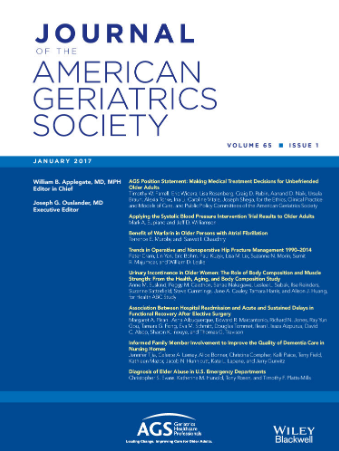Antihypertensive Deprescribing and Functional Status in VA Long-Term Care Residents With and Without Dementia
Abstract
Background
Deprescribing antihypertensives is of growing interest in geriatric medicine, yet the impact on functional status is unknown. We emulated a target trial of deprescribing antihypertensive medications compared with continued use on functional status measured by activities of daily living (ADL) in a long-term care population.
Methods
We included 12,238 Veteran Affairs long-term care residents age 65+ who had a stay ≥ 12 weeks between 2006 and 2019. After 4+ weeks of stable antihypertensive medication use, residents were classified as either deprescribed antihypertensives (reduced ≥ 1 medication or ≥ 30% dose) or continued users. Residents were followed up for 2 years, or censored at discharge, admission to hospice, protocol deviation (per-protocol analysis only), or Sept 30, 2019. The outcome was ADL dependencies (scored 0–28; higher score = worse functionality), assessed approximately every 3 months. Our primary approach was to estimate per-protocol effects using linear mixed-effects regressions with inverse probability of treatment and censoring weighting, overall and stratified by dementia status. We estimated intention-to-treat effects as a secondary analysis.
Results
In long-term care residents, ADL scores worsened by a mean of 0.29 points (95%CI = 0.27, 0.31) per 3 months and antihypertensive deprescribing did not impact this worsening (difference between groups −0.04 points every 3 months, 95%CI = −0.15, 0.06). In the non-dementia subgroup, ADL worsened by 0.15 points (95%CI = 0.11, 0.19) every 3 months. However, residents who were deprescribed showed a slightly improved ADL score over time while the continued users showed ADL decline (difference between groups −0.23 points every 3 months, 95%CI = −0.43, −0.03). Deprescribing was not associated with ADL change in the dementia subgroup. The intention-to-treat results were not meaningfully different.
Conclusions
Antihypertensive deprescribing did not have a deleterious effect on functional status in long-term care residents with or without dementia. This may be reassuring to residents and clinicians who are considering antihypertensive medication reduction or discontinuation in long-term care settings.

 求助内容:
求助内容: 应助结果提醒方式:
应助结果提醒方式:


